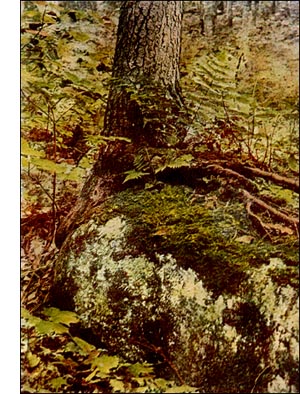Genus Bryum
 Genus BRYUM, Dill.
Genus BRYUM, Dill.The plants of the Genus Bryum live on from year to year on the ground or on rocks, seldom on trees. The stems are covered with small red-brown filaments.
The generic name is an ancient word for moss used both by Gaius Plinius, "The Elder," a Roman naturalist, who perished in the eruption that destroyed Pompeii, and by Pedanius Dioscorides, a Greek physician, who was the founder of botany and flourished in the first and second century. The name Bryum was restricted to the present genus by Johann Dillenius, a German, who was the first professor of botany at Oxford.
The leaves are smooth with a solid round vein generally extending beyond the apex; the cells are smooth, six-sided and more or less elongated.
The spore-cases are leathery, pear-shaped, narrowing down to a solid neck (collum) with breathing pores (stomata) on the surface; they are regular or rarely recurved. They have convex lids with a tiny blunt point at the centre and are borne on long and stout pedicels.
The peristome is double, the outer teeth are long and linear or lance-shaped, marked with many cross-bars internally, prominent below; the inner membrane is divided above into keeled segments adherent to or free from the teeth, and separated by usually two to five hair-like divisions (cilia) mostly with spurs attached at intervals to the margin.
The annulus is large, compound, and rolls back as the lid falls. There are 800 or more described species, one hundred and thirty-two in North America.
Rose Bryum Moss
Silvery Bryum Moss